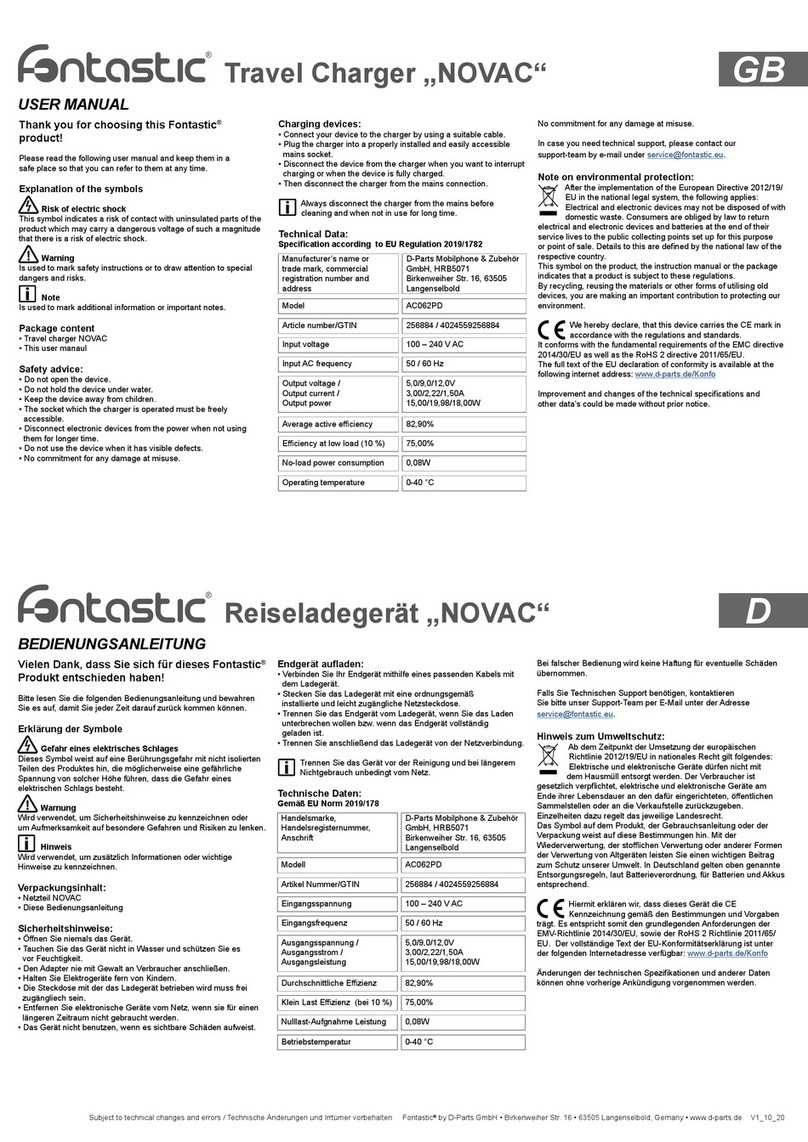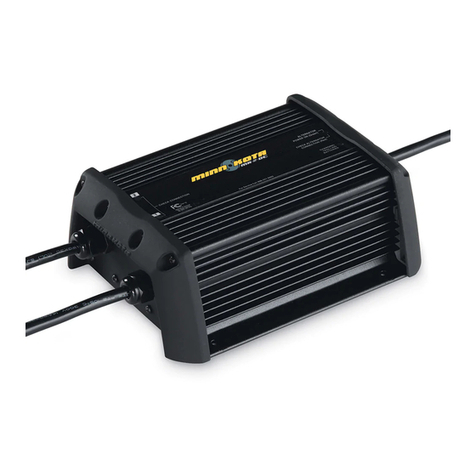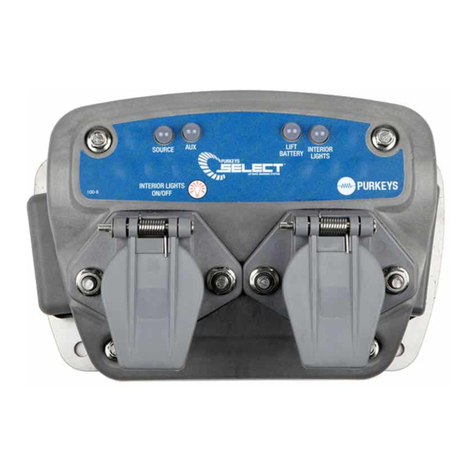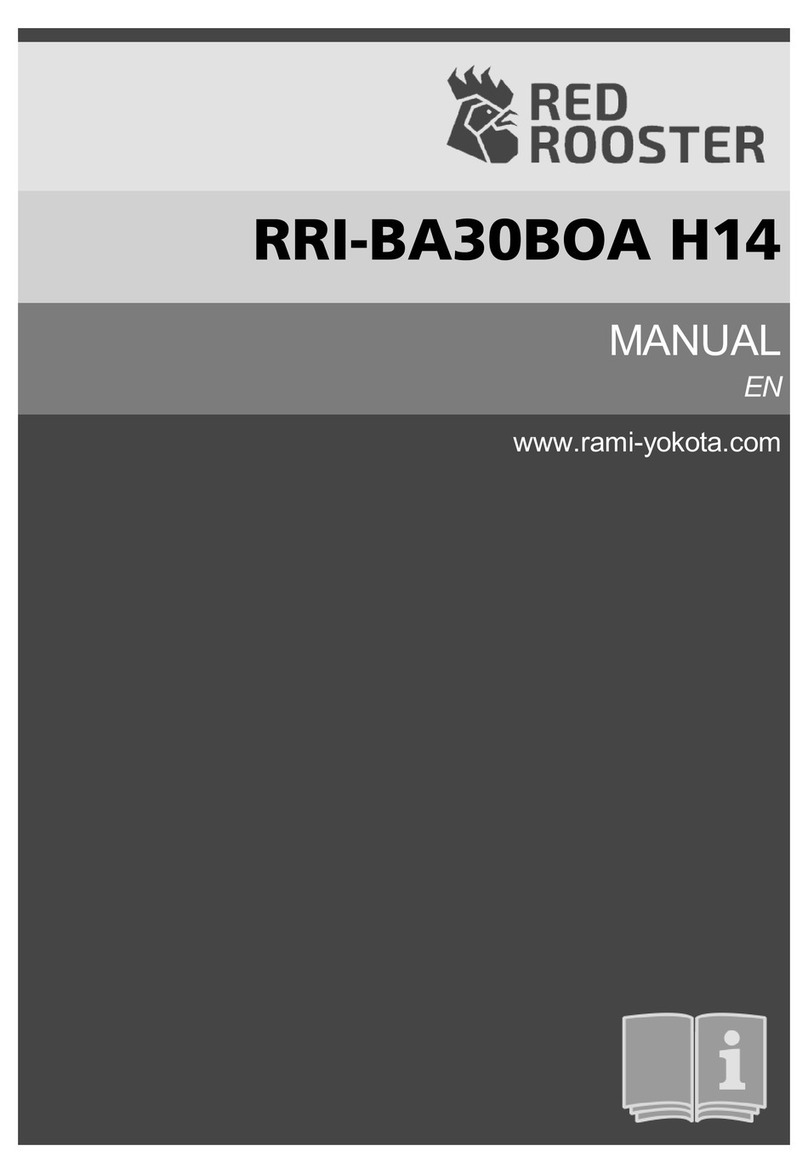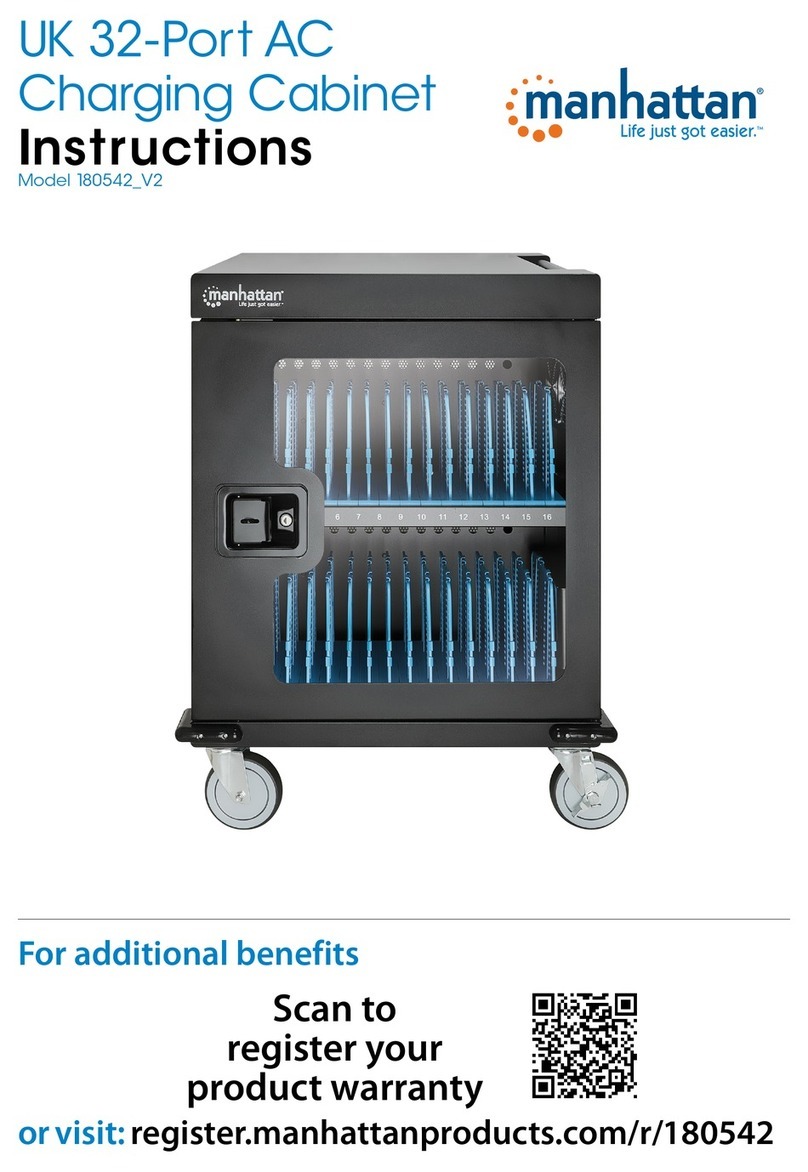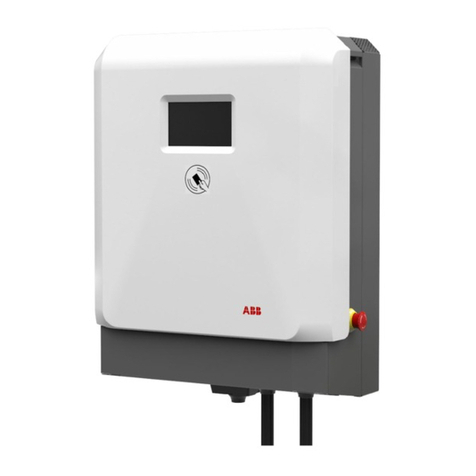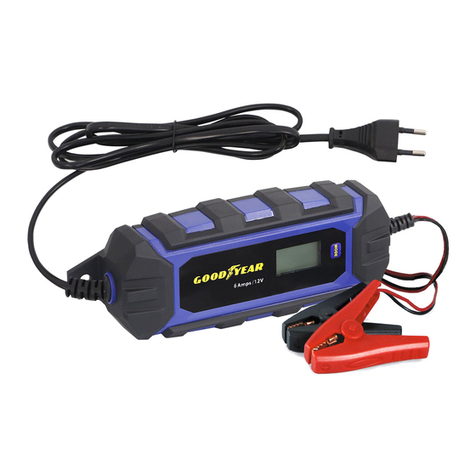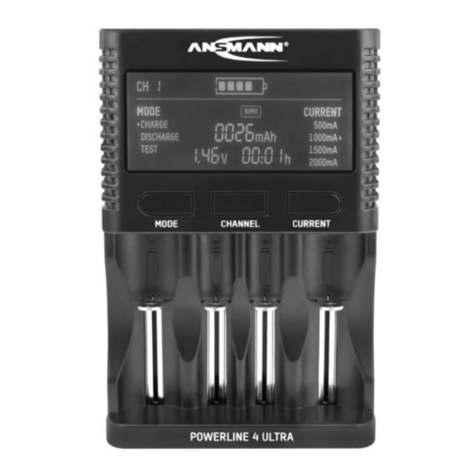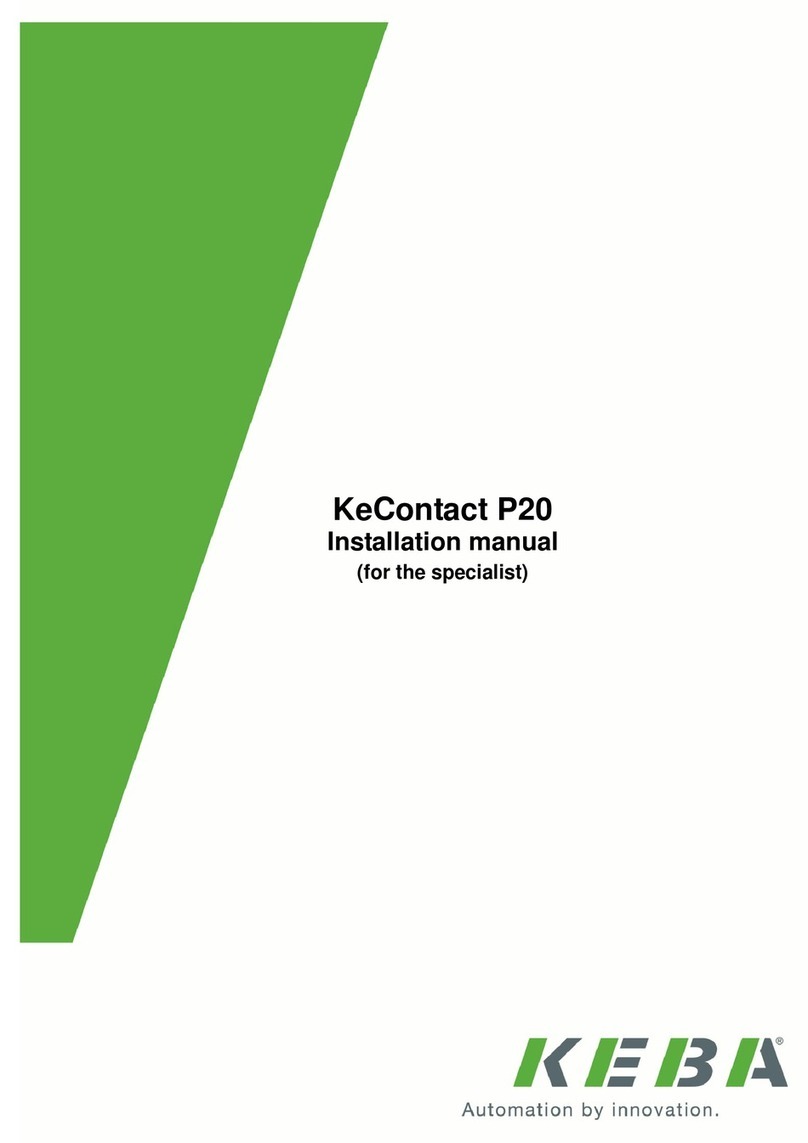KOSTAD CPC 50 User manual

Legal notice
Warning notice concept
This manual contains information that you must observe for your personal safety and to avoid damage to property. The
instructions for your personal safety are highlighted by a warning triangle, instructions for property damage alone are
without a warning triangle. Depending on the hazard level, the warnings are shown in decreasing order as follows.
If several hazard levels occur, the warning for the highest level is always used. If the warning triangle is used in a warning
against personal injury, a warning against damage to property may also be added to the same warning.
Qualified staff
The product/system associated with this documentation may only be handled by personnel qualified for the respective task
and in compliance with the associated documentation for the respective task, in particular the safety and warning
instructions contained therein. Due to their training and experience, qualified personnel are able to recognise risks and avoid
possible hazards when handling these products/systems.
Intended use of Kostad products
Note the following:
Brands All designations marked with ® are registered trademarks of Siemens AG. The other designations in this document may be
trademarks whose use by third parties for their own purposes may infringe the rights of the owner.
Disclaimer We have checked the contents of this publication for conformity with the hardware and software described. Nevertheless,
deviations cannot be ruled out, so that we cannot guarantee complete conformity. The information in this publication is
checked regularly and any necessary corrections are included in subsequent editions.
Kostad Steuerungsbau GmbH
Parkallee 20
2483 Ebreichsdorf
Austria
Copyright © Siemens AG 2018 - 2020. All
rights reserved.
DANGER
means that deathor serious bodily injury will occur if the appropriate precautions are not taken.
WARNING
means that death or serious bodily injury may occur if the appropriate precautions are not taken.
CAUTION
means that slight bodily injury may occur if the appropriate precautions are not taken.
ATTENTION
means that property damage can occur if the appropriate precautions are not taken.
WARNING
Siemens products may only be used for the applications specified in the catalogue and in the associated technical
documentation. If third-party products and components are used, they must be recommended or approved by Siemens.
Faultless and safe operation of the products requires proper transport, storage, assembly, installation, commissioning,
operation and maintenance. The permissible ambient conditions must be observed. The instructions in the relevant
documentation must be observed.

CPC50|60|90|120
Operating instructions, 012/2020,
3
Table of contents
1Introduction...........................................................................................................................................................7
1.1 About this guide................................................................................................................................7
1.2 Text features.....................................................................................................................................7
2Safety instructions .................................................................................................................................................9
2.1 Information for the person responsible for the installation.................................................................9
2.2 The five safety rules ..........................................................................................................................9
2.3 Safety instructions........................................................................................................................... 10
2.4 Handling electrostatically sensitive devices (ESD)............................................................................. 13
2.5 Conversions or alterations...............................................................................................................13
2.6 Risks in handling the charging station..............................................................................................13
2.7 Plant identification..........................................................................................................................14
2.8 Warning and information signs........................................................................................................ 14
2.9 Residual risks ..................................................................................................................................15
2.10 Notes on operating the charging cable/plug combination................................................................. 16
3Description .......................................................................................................................................................... 19
3.1 System description..........................................................................................................................19
3.2 Variants / options for the charging station.......................................................................................20
3.3 Charging outlets of the charging station ..........................................................................................28
3.4 Type plate.......................................................................................................................................30
4Deployment preparation...................................................................................................................................... 33
4.1 Storage...........................................................................................................................................33
4.2 Transport........................................................................................................................................ 33
4.2.1 Safety instructions...........................................................................................................................33
4.2.2 Transport with forklift truck ............................................................................................................ 34
4.2.3 Transport with crane.......................................................................................................................35
4.3 Set up............................................................................................................................................. 36
4.3.1 Installation site, positioning.............................................................................................................36
4.3.2 Heat dissipation ..............................................................................................................................37
4.3.3 Foundation ..................................................................................................................................... 37
4.3.4 Ram protection ............................................................................................................................... 40
5Assembly............................................................................................................................................................. 41
5.1 Assembly steps ............................................................................................................................... 41

CPC50|60|90|120
Operating instructions, 012/2020,
4
Table of contents
6Connect................................................................................................................................................................47
6.1 Power connection............................................................................................................................47
6.1.1 Safety instructions...........................................................................................................................47
6.1.2 Connecting the power supply...........................................................................................................48
6.1.3 Mains voltage and power supply......................................................................................................54
6.1.4 On-site equipotential bonding..........................................................................................................55
6.1.5 Testing the electrical system............................................................................................................55
6.2 Network connection........................................................................................................................56
6.2.1 Ethernet LAN connection.................................................................................................................56
6.2.2 Mobile phone connections (APN).....................................................................................................60
6.2.3 Network communication test...........................................................................................................62
7Commissioning.....................................................................................................................................................63
7.1
Switching the charging station on and off.........................................................................................63
7.2
Residual current and insulation monitoring ......................................................................................67
7.2.1
Fault-current circuit breaker ............................................................................................................67
7.2.2
Earth fault/insulation monitoring.....................................................................................................68
8
Operation
............................................................................................................................................ 73
8.1
Visualisation....................................................................................................................................73
8.2
User area.........................................................................................................................................73
8.2.1
Start image......................................................................................................................................73
8.2.2
Main view........................................................................................................................................74
8.2.2.1
Main view........................................................................................................................................74
8.2.2.2
Menu bar ........................................................................................................................................75
8.2.2.3
Charging point view.........................................................................................................................77
8.2.3
User functions.................................................................................................................................78
8.2.3.1
Start charging..................................................................................................................................78
8.2.3.2
End charging process.......................................................................................................................82
8.2.3.3
Terminating the charging process with a master card.......................................................................82
8.2.3.4
Authorisation procedure..................................................................................................................83
8.2.3.5
Charging point view (detailed view)..................................................................................................84
8.2.4
Change of the display language........................................................................................................94
8.2.5
Customisation of the visualisation....................................................................................................95
8.2.5.1
Wallpaper and screensaver..............................................................................................................96
8.2.5.2
Help pages.......................................................................................................................................98
8.3
Service area...................................................................................................................................100
8.3.1
Service menu.................................................................................................................................100
8.3.2
Display language in the service area...............................................................................................102
8.3.3
Basic menu....................................................................................................................................103
8.3.3.1
Basic menu....................................................................................................................................103
8.3.3.2
Causes of demolition .....................................................................................................................104
8.3.3.3
Configuration changes...................................................................................................................105
8.3.4
Service menu.................................................................................................................................106
8.3.4.1
Station configuration (S) ................................................................................................................106
8.3.4.2
RGB LED (S/O) ...............................................................................................................................107
8.3.4.3
Temperatures (S)...........................................................................................................................111
8.3.4.4
Operator settings (S/O)..................................................................................................................113
8.3.4.5
OCPP (S/O)....................................................................................................................................119

CPC50|60|90|120
Operating instructions, 012/2020,
5
Table of contents
8.3.4.6 Payment terminal (S/O)................................................................................................................. 128
8.3.4.7 Messages (S)................................................................................................................................. 135
8.3.4.8 Limitations (S)............................................................................................................................... 136
8.3.4.9 RFID Reader (S/O) ......................................................................................................................... 137
8.3.4.10 Performance Management (S/O)................................................................................................... 142
8.3.4.11 MaxChargingTime (S) .................................................................................................................... 148
8.3.4.12 Fan night mode (S) ........................................................................................................................ 149
8.3.4.13 Operating schedule (O).................................................................................................................. 151
8.3.4.14 Software information .................................................................................................................... 155
8.3.4.15 Calibrate (S/O) .............................................................................................................................. 156
8.3.4.16 Plaster picture (S/O)...................................................................................................................... 156
8.3.4.17 System restart (S/O)...................................................................................................................... 158
8.3.4.18 Configuration (S)........................................................................................................................... 158
8.3.4.19 User (S/O)..................................................................................................................................... 160
8.3.4.20 End Runtime (S) ............................................................................................................................ 161
8.3.4.21 Time setting (S/O) ......................................................................................................................... 164
8.3.4.22 PLC diagnosis (S) ........................................................................................................................... 166
8.3.4.23 Maintenance data (S) .................................................................................................................... 167
8.3.4.24 Ext. metering (S)............................................................................................................................ 168
8.3.4.25 Equipment conforming to calibration regulations (ERK) .................................................................. 169
8.3.4.26 Stop Causes (S/O).......................................................................................................................... 171
8.3.4.27 Web Management (S) ................................................................................................................... 172
8.3.4.28 Configuration Management (S)...................................................................................................... 173
8.3.4.29 Test functions (S)........................................................................................................................... 174
8.3.4.30 Simulation (S) ............................................................................................................................... 176
8.3.4.31 Loader Service Menu .................................................................................................................... 186
8.3.4.32 Energy measurement .................................................................................................................... 188
8.3.4.33 Diagnosis ...................................................................................................................................... 188
8.4 Alarm, error and system messages ................................................................................................ 190
8.4.1 Access with Sinema Remote and Smart Server............................................................................... 190
8.4.2 Charging point is not available....................................................................................................... 191
8.4.3 EMERGENCY STOP button..........................................................................................................................192
8.4.4 General error ................................................................................................................................ 194
8.4.5 Control cabinet door open............................................................................................................. 195
8.4.6 Behaviour of the charging station after power failure..................................................................... 196
8.4.6.1 Behaviour at idle ........................................................................................................................... 196
8.4.6.2 Behaviour during ongoing charging processes................................................................................ 196
8.4.7 Behaviour of the charging station after RCD failure (AC charging outlet side) .................................. 196
8.4.8 Troubleshooting and remedy......................................................................................................... 197
8.4.9 Error codes ................................................................................................................................... 198
9Maintenance ..................................................................................................................................................... 203
9.1 Safety instructions......................................................................................................................... 203
9.2 Maintenance and servicing work................................................................................................... 204
9.3 Checking and replacing the filter mats ........................................................................................... 205
9.4 Replacing the fan........................................................................................................................... 206
9.5 Replacing the fan cartridge of the SINAMICS DCP power modules.................................................. 207
9.6 Testing the charging cables and charging plugs.............................................................................. 209
9.7 Exchange of charging cable incl. charging plug................................................................................ 209

CPC50|60|90|120
Operating instructions, 012/2020,
6
Table of contents
9.8 Replacement of an AC socket (22kVA) ............................................................................................ 218
9.9 Testing the residual current circuit breaker.................................................................................... 219
9.10 Testing the cable cooling recooling unit ......................................................................................... 220
9.11 Cleaning........................................................................................................................................ 220
9.12 Notes on maintenance.................................................................................................................. 221
10 Spare parts......................................................................................................................................................... 223
10.1 Ordering information .................................................................................................................... 223
10.2 List of maintenance and repair parts.............................................................................................. 223
11 Disposal ............................................................................................................................................................. 229
11.1 Reference to chapter Safety instructions........................................................................................ 229
11.2 Temporary decommissioning......................................................................................................... 230
11.3 Final decommissioning .................................................................................................................. 231
11.3.1 Introduction.................................................................................................................................. 231
11.3.2 Country-specific legal regulations .................................................................................................. 231
11.3.3 Preparation for disassembling the charging station........................................................................ 232
11.3.4 Disassembly.................................................................................................................................. 233
11.3.5 Dispose of components................................................................................................................. 234
AService & Support .............................................................................................................................................. 237
A.1 Siemens Industry Online Support .................................................................................................. 237
BTechnical data and dimensions........................................................................................................................... 239
B.1 Technical data............................................................................................................................... 239
B.2 Dimensions................................................................................................................................... 242
CDocuments......................................................................................................................................................... 243
C.1 Kostad Control Engineering Ltd...................................................................................................... 243
C.2 List of abbreviations...................................................................................................................... 243
Index.................................................................................................................................................................. 247

CPC50|60|90|120
Operating instructions, 012/2020,
7
Introduction1
1.1 About this guide
These operating instructions describe the charging station and inform you about how to use it
- from delivery to disposal. Keep these operating instructions for future reference.
Read these operating instructions before handling the charging station and follow the instructions.
This will ensure hazard-free and fault-free operation as well as a long service life of the charging
station.
1.2 Text features
The warning concept is explained on the back of the inside title. Adhere to all safety-related
information in these instructions and on the product.
In addition, you will find the following text features in these instructions:
1. Instructions for action are presented as a numbered list. Keep to the order of the action steps.
•Enumerations use the list item.
- The dash indicates enumerations in the second level.
Note
A note gives you further information about the product, the handling of the product or the respective
documentation.

CPC50|60|90|120
Operating instructions, 012/2020,
8
Introduction
1.2 Text features

CPC50|60|90|120
Operating instructions, 012/2020,
9
Safety instructions 2
2.1 Information for the person responsible for the installation
When using the charging station outside the European Community, observe the country-specific
regulations. Follow the local and industry-specific safetyand installation regulations.
Those responsible for the installation must ensure the following:
•Planning and project work as well as all work on and with the machine is only carried out by
qualified personnel.
•The operating instructions are always available during all work.
•The technical data and the information on the permissible installation, connection, ambient
and operating conditions are consistently observed.
•The specific erection and safety regulations as well as the regulations for the use of
personal protective equipment are observed.
Note
Make use of the support and services of the responsible Customer Support (office@kostad.at) for
planning, installation, commissioning and service tasks.
You will find safety instructions in the individual chapters of this document. For your own safety, for
the protection of other persons and to avoid damage to property, it is essential that you comply with
the safety instructions.
Observe the following safety instructions for all activities on and with the charging station.
2.2 The five safety rules
For your personal safety and to avoid damage to property, always observe the safety-relevant
instructions and the following five safety rules according to EN 50110-1 "Working in a de-energised
state" during all work. Apply the five safety rules in the stated order before starting work.
Five safety rules
1. Unlock.
Also switch the auxiliary circuits free, e.g. standstill heating.
2. Secure against being switched on again.
3. Determine the absence of voltage.
4. Earth and short-circuit.
5. Cover or fence off adjacent live parts.

Safety instructions
CPC50|60|90|120
Operating instructions, 12/2020,
10
2.3 Safety instructions
After completing the work, cancel the measures taken in the reverse order.
2.3 Safety instructions
Safety in the workplace depends on the attention, precaution and common sense of all persons who
install, operate and maintain the machine. In addition to observing the listed safety precautions,
caution should always be exercised in the vicinity of the machine. Always be aware of your safety.
To avoid accidents, also note the following:
•General safety regulations of the respective country of operation
•Specific regulations of the operator and the area of use
•Specific agreements made with the operator
•Separate safety instructions supplied with the machine
•Safety symbols and notices on the machine and its packaging
WARNING
Live parts
Charging stations have live parts.
Removal of covers, improper use of the charging station, incorrect operation or insufficient
maintenance can result in death, serious injury or property damage.
•
Always follow the "FiveSafety Rules" (page 9) when working on the charging station.
•
Only remove covers in accordance with the instructions in this operating manual.
•
Operate the charging station properly.
•
Maintain the charging station regularly and professionally according to the instructions in
the chapter "Maintenance" (page 203).
WARNING
Electric shock in case of damaged equipment
Improper handling can result in damage to equipment. If units are damaged, dangerous voltages
may be present on the housing or exposed components which, if touched, can cause serious injury
or death.
•
During transport, storage and operation, comply with the limit values specified in the technical
data.
•
Check the charging cables and charging plugs for tampering, damage and foreign
objects.
•
Do not use damaged equipment.

Safety instructions
CPC50|60|90|120
Operating instructions, 12/2020,
11
2.3 Safety instructions
WARNING
Electric shock if the cable shield is not connected
Capacitive coupling can cause life-threatening touch voltages if the cable shields are not
connected.
•
Connect line shields and unused cores of power lines to earthed enclosure potential on at least
one side.
WARNING
Electric shock due to residual charges in power components
Dangerous voltage is still present through the capacitors for up to 5 minutes after the supply has
been switched off. Touching live parts can lead to death or serious injury.
•
Wait 5 minutes before checking that no voltage is present and starting work.
WARNING
Arcing when disconnecting a plug connection during operation
If a plug connection is disconnected during operation, an electric arc can occur which can lead
to serious injury or death.
•
Only open plug connections when they are de-energised, unless they are expressly
released for disconnection during operation.
WARNING
High leakage currents in case of interruption of the protective conductor in the mains supply line
The charging station carries a high leakage current via the protective earth conductor. Touching
conductive parts can lead to death or serious injury if the protective conductor is interrupted.
•
Ensure that the external protective earth conductor meets at least one of the following
conditions:
–
The protective earth conductor is routed in such a way that it is protected against mechanical
damage.
Cables laid inside control cabinets or enclosed machine housings are considered to be
adequately protected against mechanical damage.
–For a single conductor, the protective conductor has a cross-section of at least 10 mm² Cu.
–As a core of a multi-core cable, the protective conductor has a cross-section of at least 2.5
mm² Cu.
–The protective conductor has a parallel second protective conductor with the same cross-
section.
–The protective conductor complies with the local regulations for equipment with increased
leakage current.

Safety instructions
CPC50|60|90|120
Operating instructions, 12/2020,
12
2.3 Safety instructions
Note
The use of the charging station is explicitly only permitted for electric vehicles approved for this
purpose.
Note
The unit is only suitable for industrial applications. In domestic environments, these devices may
cause unwanted radio interference. In this case, the operator may be required to implement
appropriate measures.
WARNING
Fire in case of insulation overload
In the event of an earth fault in an IT network, there is a higher load on the insulation. Possible
consequence is a failure of the insulation with serious bodily injuries or death due to smoke
development and fire.
•
Use a monitoring device that reports an insulation fault.
•
Eliminate the fault as soon as possible in order to overload the insulation only briefly.
WARNING
Dangers due to missing or illegible warning signs
Missing or illegible warning signs can lead to hazards going unrecognised. Unrecognised hazards
can result in accidents causing serious bodily injury or death.
•
Check the completeness of the warning signs against the documentation.
•
Attach missing warning labels on the components with text in the respective national
language.
•
Replace illegible warning signs.
CAUTION
Burns from hot surfaces
The surface of the enclosure can reach temperatures of > 60 °C. Avoid touching the surface of the
housing.
ATTENTION
Equipment damage due to improper voltage / insulation tests
Improper voltage/insulation checks can lead to damage to the unit.
•Disconnect the charging station before carrying out a voltage/insulation test, as all inverters are
high-voltage tested by the manufacturer and further testing within the charging station is
therefore not necessary.

Safety instructions
CPC50|60|90|120
Operating instructions, 12/2020,
13
2.6 Risks in handling the charging station
2.4 Handling of electrostatically sensitive components (ESD)
Electrostatic sensitive devices (ESD) are individual components, integrated circuits, assemblies or
devices that can be damaged by electrostatic fields or electrostatic discharges.
2.5 Conversions or alterations
Any change concerning the charging station must be discussed with the manufacturer in advance and
his approval must be obtained.
Any documentation including these operating instructions must be updated accordingly.
Note
In case of unauthorised conversions and modifications of the system, any liability and warranty of the
manufacturer expires!
2.6 Risks in handling the charging station
Risks and impairments may arise when using the charging station:
•For the charging station itself
•For other tangible assets
Always keep the operating instructions at the place of use. The operating instructions must be freely
accessible to maintenance personnel.
In addition, you must observe the general and local regulations on accident prevention and
environmental protection.
ATTENTION
Equipment damage due to electric fields or electrostatic discharge
Electric fields or electrostatic discharge can cause malfunctions due to damaged individual
components, integrated circuits, assemblies or devices.
•
Only pack, store, transport and ship electronic components, assemblies or devices in the
original product packaging or in other suitable materials, e.g. conductive foam rubber or
aluminium foil.
•
Only touch components, assemblies and devices if you are earthed by one of the
following measures:
–Wearing an EGB wristband
–Wearing EGB shoes or EGB earthing strips in EGB areas with conductive flooring
•
Only place electronic components, assemblies or devices on conductive supports (table with
EGB support, conductive EGB foam, EGB packaging bag, EGB transport container).

Safety instructions
CPC50|60|90|120
Operating instructions, 12/2020,
14
2.8 Warning and information signs
The basis for safe handling and fault-free operation of the charging station is knowledge of the safety
instructions and the instructions for use in this manual.
2.7 Plant identification
Warning signs are mounted on the system to warn of residual risks, which cannot be removed by
design.
Observe all warnings and safety instructions and other markings attached to the unit.
If there are unfamiliar safety signs on the equipment, observe their corresponding meaning and the
existing textual supplements in the immediate vicinity.
A detailed description of the attached safety signs can be found in the corresponding legal regulations
and standards, e.g. KennV, ISO 7010.
2.8 Warning and information signs
The following warning signs are displayed on the charging station:
Warning sign
Meaning
General warning sign
Warning of electrical voltage
Hot surface warning
Warning of danger of tipping over

Safety instructions
CPC50|60|90|120
Operating instructions, 12/2020,
15
2.9 Residual risks
The following information signs are affixed to the packaging of the charging station:
Reference sign
Meaning
Marking the centre of gravity
Warning of danger of tipping over
Marking of the places where it is not allowed to pick up with a forklift truck.
2.9 Residual risks
The machine manufacturer or system installer must take into account the following residual risks
emanating from the control components when carrying out the risk assessment of his system in
accordance with the relevant local regulations (e.g. Low Voltage Directive):
1. Uncontrolled power supply to a vehicle during commissioning, operation,
maintenance and repair, e.g. by:
–HW and/or SW errors in sensors, control and connection technology
–Response times of the control system
–Operation and/or environmental conditions outside the specification
–Condensation/conductive pollution
–Errors during parameterisation, programming, wiring and assembly
–Use of radios/mobile phones in the immediate vicinity of the electronic components
–External influences / damage
–X-ray, ionising and cosmic radiation
2. In the event of a malfunction, exceptionally high temperatures may occur inside and outside the
components, including an open fire, as well as emissions of light, noise, particles, gases, etc., e.g.
due to:
–Component failure
–Software error
–Operation and/or environmental conditions outside the specification
–External influences / damage

Safety instructions
CPC50|60|90|120
Operating instructions, 12/2020,
16
2.10 Notes on operating the charging cable/plug combination
3. Dangerous contact voltage e.g. due to:
–Component failure
–Influence with electrostatic charges
–Voltage induction
–Operation and/or environmental conditions outside the specification
–Condensation/conductive pollution
–External influences / damage
4. Operational electric or electromagnetic fields that can be dangerous, e.g. for wearers of
pacemakers, implants or metallic objects, if the distance is insufficient.
5. Release of environmentally harmful substances and emissions in the event of improper operation
or improper disposal of components.
6. Interference with network-based communication systems, e.g. ripple control transmitters or
data communication via the network.
7. The connection of the charging station to the local Ethernet is not permitted.
2.10
Notes on operating the charging cable/plug combination
Note
During the preparation of the charging process and the charging process itself, the plug is locked by the
vehicle. Under no circumstances may you forcibly disconnect this connection. You may only remove
the plug after the charging process has been completed. Follow the instructions on the control panel.
For handling the charging cable and the plug, you must follow the manufacturer's instructions of the
charging cable manufacturer, e.g. the company Phoenix.
Note the following schematic representation (image source/copyright: PHOENIX CONTACT GmbH &
Co. KG).

Safety instructions
CPC50|60|90|120
Operating instructions, 12/2020,
17
2.10 Notes on operating the charging cable/plug combination
Fig. 2-1Handling the charging cable

Safety instructions
CPC50|60|90|120
Operating instructions, 12/2020,
18
2.10 Notes on operating the charging cable/plug combination

CPC50|60|90|120
Operating instructions, 12/2020,
19
Description 3
3.1 System description
CPC50|60|90|120 is a multi-standard charging station designed to,
charge electric vehicles.
The charging station supports the following relevant AC and DC charging standards to ensure
charging of various electric vehicles:
•CCS2 Combo plug type 2 (Combined Charging System)
Up to DC 120 kW charging power at max. DC 920 V or 200 A
•CHAdeMO V0.9.x to 1.2 (CHArge de MOve) Up
to DC 50 kW charging power at max. 125 A
•AC type 2 with 22 kVA or 43kVA (single to 3-phase)
Note
The charging station can only charge one connected EV on the DC side. Parallel charging of two EVs
with DC (CCS2 and CHAdeMO) is not possible as standard. Parallel DC charging can also be ordered as
an option.
Parallel charging of two EVs is possible with one DC charging output and the AC charging output.
The 22kVA version can be ordered both as a socket version and as a cable/plug combination. The
43kVA version is only available with a fixed cable and plug.
A phase symmetry monitor can also be selected in addition to this option in accordance with the
version according to VDE-AR-N 4100.
In order to start the charging process, vehicle owners must authenticate themselves and select the
required charging connection. They can authenticate themselves e.g. via RFID, mobile app, credit
card at the payment terminal.
There are various RFID reading systems for the standard RFID procedures. A detailed explanation of
the RFID reading systems can be found in the chapter "RFID Reader".
Furthermore, there is the possibility of "free charging". You can start a charging process without
authorisation if there is a corresponding release by the operator/owner of the charging station.
In addition, parallel charging of two e-vehicles is possible with the AC and DC outputs. You can charge
two vehicles at the same time.

CPC50|60|90|120
Operating instructions, 12/2020,
20
Description
3.2 Variants / options for the charging station
3.2
Variants / options for the charging station
In addition to the standard variants, several variants of the charging station are available on special
request. Please contact Kostad (office@kostad.at) for the available variants.
The relevant article number for your charging station can be found on the type plate on the left side
panel in the upper front area.
Note
The features and functions described below are order-dependent and therefore not available for all
stations. They represent available options.
AC and DC metering and AC energy metering for AC and DC charging outlets are available as options.
Various forms exist for the option "Calibration-compliant AC and DC metering and AC energy
metering for AC and DC charging outlets".
Digit of the article number
1.-4.
5.
6.
7.
8.
9.
10.
11.
12.
Charging pole CPC 50/60|90|120
CPCM
1
.
.
.
.
.
.
AC and DC metering and AC
energy metering for AC and DC
charging outlets are available as
options.
Without ERK DC
metering Without AC
metering
0
Without ERK DC
metering With AC meter
1
With ERK-DC metering
Without AC metering
2
With ERK-DC-Metering
With AC-Meter
3
Without AC meter
4
With AC meter for
measuring the DC charging
energy
With AC meter for AC load
output
5
With AC meter for
measuring the DC charging
energy
Without AC meter for the AC
load output
6
With AC meter for
measurement for the AC
charging output
Without measuring the DC
charging energy
7
ERK and metering variants
AC and DC measurement in compliance with calibration regulations
This feature is only required for installations of charging infrastructure in Germany. The technical
prerequisites for the calibration conformity of the AC and DC measuring technology are currently
being created by the manufacturer and will be integrated by the end of 2020 into a system that has
been type-tested by a conformity assessment body (CAB) and is ready for series production.
This manual suits for next models
3
Table of contents

